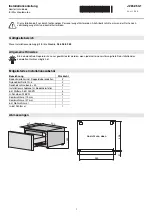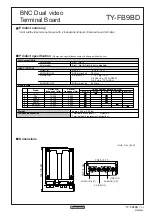
databases after the restore is complete, select
Automatically remount all databases after the
recovery point is restored
. Click
Finish
.
21.
Click
OK
to confirm the status message that the restore process has started.
22.
To monitor the progress of your restore action, on the Core Console, click
Events
.
Restoring volumes for a Linux machine using the Command Line
In AppAssure, you can restore volumes on your protected Linux machines using the command-line
aamount
utility. To restore volumes for a Linux machine using the command line:
CAUTION: You should not attempt to restore the system or root (/) volume.
1.
Run the AppAssure
aamount
utility as root, for example:
sudo aamount
2.
At the AppAssure mount prompt, enter the following command to list the protected machines:
lm
3.
When prompted, enter the IP address or host name of your AppAssure Core server.
4.
Enter the logon credentials, that is, the username and password, for this server.
A list displays showing the machines that this AppAssure server protects. It lists the agent machines
found by line item number, host/IP address, and an ID number for the machine (for example:
293cc667-44b4-48ab-91d8-44bc74252a4f
).
5.
Enter the following command to list the currently mounted recovery points for the specified
machine:
lr <machine_line_item_number>
NOTE: You can also enter the machine ID number in this command instead of the line item
number.
A list is displayed that shows the base and incremental recovery points for that machine. This list
includes a line item number, date/timestamp, location of volume, size of recovery point, and an ID
number for the volume that includes a sequence number at the end (for
example,
”293cc667-44b4-48ab-91d8-44bc74252a4f:2”
), which identifies the recovery point.
6.
To select a recovery point for rollback, enter the following command:
r [volume_recovery_point_ID_number] [path]
This command rolls back the volume image specified by the ID from the Core to the specified path.
The path for the rollback is the path for the device file descriptor and is not the directory to which it
is mounted.
NOTE: To identify the recovery point, you can also specify a line number in the command
instead of the recovery point ID number. In that case, use the agent/machine line number (from
the
lm
output), followed by the recovery point line number and volume letter, followed by the
path, such as,
r [machine_line_item_number] [recovery_point_line_number]
[volume_letter] [path]
. In this command, [path] is the file descriptor for the actual
volume.
For example, if the
lm
output lists three agent machines, and you enter the
lr
command for
number 2, and you want to roll back the 23 recovery point volume b to the volume that was
mounted to the directory
/mnt/data
, the command is:
r2 23 b /mnt/data
.
7.
When prompted to proceed, enter
y
for Yes.
after the rollback proceeds, a series of messages appear that notify you of the status.
72
Содержание DL1000
Страница 1: ...Dell DL1000 Appliance User s Guide ...
















































